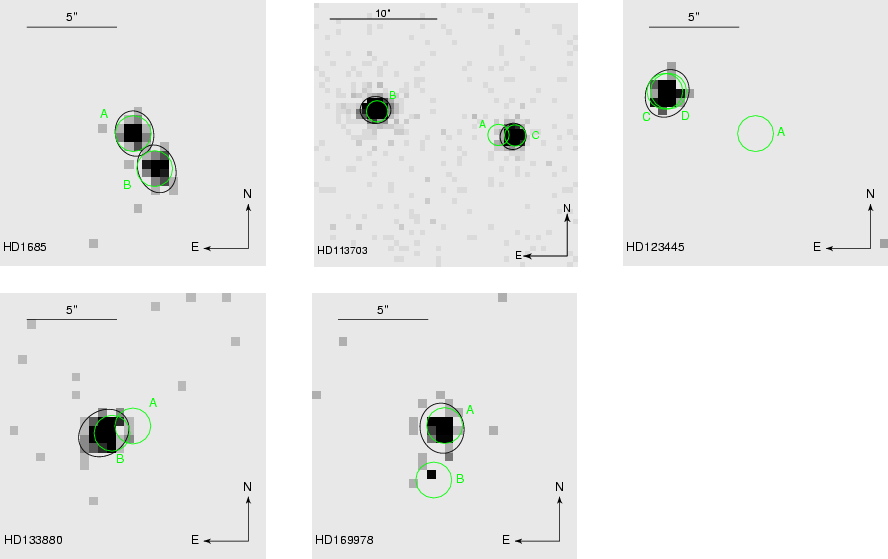
 Credit: B. Steltzer (INAF) et al., 2003,
Astronomy & Astrophysics,
vol. 407, p. 1067
Credit: B. Steltzer (INAF) et al., 2003,
Astronomy & Astrophysics,
vol. 407, p. 1067
Near the Bs
Nearly all stars emit X-rays. Stars of low mass like the sun produce X-ray emission by using magnetic energy to heat gas. Very massive stars don't have strong magnetic fields but do have dense, unstable winds which contain pockets of hot, shocked, X-ray producing gas. Between these two groups lie "medium mass" stars (called B stars by astronomers) which should be X-ray faint: they don't have strong magnetic fields or massive stellar winds. However some of these stars do show up as X-ray bright sources. A bit of a mystery: either our understanding of stellar structure and X-ray production is wrong, or some other nearby star is really the source of the X-ray emission. The Chandra X-ray Observatory, with its exceptional spatial resolution, has begun to address this puzzle by trying to determine whether these mysteriously X-ray bright stars really are the sources of the X-ray emission. The image above shows X-ray images of the region around 5 X-ray bright B stars (marked by their "Henry Draper" or HD catalog numbers). In each images the optical position of the B stars is marked by the letter A (typical astronomers!) and the positions of the B stars and other nearby stars are indicated with green circles, while the black ellipses indicate the locations of x-ray sources detected by Chandra. Three of the five B stars are not X-ray sources, but two are. Do we need even better spatial resolution to finally resolve this mystery?
Last Week *
HEA Dictionary * Archive
* Search HEAPOW
* Education
Each week the HEASARC
brings you new, exciting and beautiful images from X-ray and Gamma ray
astronomy. Check back each week and be sure to check out the HEAPOW archive!
Last modified ¥


